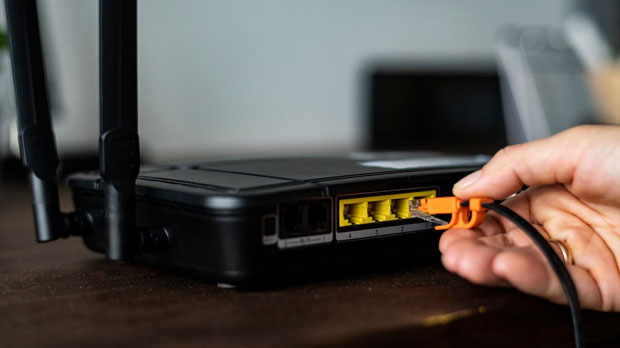Is there a free online SOCKS5 proxy service that supports cell phones?
In today's digital age, privacy and security are paramount, and many internet users look for ways to protect their online activities. One such method is using a proxy service, with SOCKS5 being one of the most commonly utilized protocols due to its flexibility and effectiveness. However, when it comes to mobile users, the question arises: Are there free online socks5 proxy services that support mobile devices? The answer is not as straightforward as it seems. While free proxies do exist, there are several limitations in terms of security, speed, and support for mobile platforms. This article delves into the key aspects of free socks5 proxies for mobile users, examining both their benefits and the potential risks. What is a SOCKS5 Proxy?To understand the challenges and benefits of using a free socks5 proxy, it's important first to understand what SOCKS5 is. SOCKS5 is a versatile proxy protocol that allows internet traffic to flow through a third-party server, effectively masking the user's IP address. This can offer greater anonymity and circumvent geographic restrictions on content. SOCKS5 is particularly favored over older SOCKS protocols because it supports a wider variety of internet traffic types and offers better security features, such as user authentication.The flexibility of SOCKS5 makes it an attractive option for users looking to route traffic from different applications, including web browsers, torrent clients, and even mobile apps. While SOCKS5 is primarily used on desktop devices, it can also be configured on mobile platforms, offering mobile users a chance to enjoy enhanced privacy and unblocking capabilities.Are Free SOCKS5 Proxies Available for Mobile Devices?The rise of free online services has made many mobile users wonder if they can find a free SOCKS5 proxy service that works well with their smartphones or tablets. While there are indeed free SOCKS5 proxy services available, it’s important to assess their functionality, security, and performance—particularly when it comes to mobile use.1. Functionality and Configuration Mobile devices, especially smartphones, often come with limitations when it comes to manual configuration of network settings. Unlike desktop computers, which may allow users to easily input proxy configurations in the operating system’s settings, mobile platforms like Android and iOS require specific apps or software to configure a SOCKS5 proxy. Most free SOCKS5 proxy services do not offer mobile-friendly configurations, leaving users with a higher chance of encountering issues or requiring third-party apps to implement the service.2. Security Risks While free proxies, including SOCKS5 services, offer the appeal of no-cost usage, they often come with significant security risks. Free services may lack proper encryption, leaving users vulnerable to hackers, data leakage, or even malware. For mobile users, these risks are amplified due to the limited capabilities of many free proxy services to offer robust protection on mobile operating systems.3. Limited Bandwidth and Speed One of the most common limitations of free SOCKS5 proxies is restricted bandwidth and slower connection speeds. Since free services often rely on shared servers, the speed of the connection can be erratic, especially during peak usage hours. Mobile users, who tend to rely on cellular data networks, may experience even slower speeds due to the additional strain on resources. For users who need reliable and fast internet access on their smartphones or tablets, this can be a major downside.4. Mobile Compatibility Issues Another concern is the compatibility of free SOCKS5 proxies with mobile operating systems. Many free services are not optimized for mobile usage, leading to a poor user experience. Some services may work better with desktop applications, but they are not adapted for mobile platforms, resulting in frequent connection drops or failures to authenticate the proxy settings.The Challenges of Free SOCKS5 Proxies for Mobile UsersWhile the idea of using a free SOCKS5 proxy on mobile devices may seem appealing, several key challenges make this less than ideal for most users:1. Lack of Customer Support Free proxy services typically do not offer customer support. This is especially problematic for mobile users who may encounter issues with proxy configurations or experience connection failures. Unlike paid services, which provide detailed technical support, free services often leave users to troubleshoot on their own, which can be frustrating and time-consuming.2. Reliability and Stability Free SOCKS5 proxies are often unstable, with frequent downtimes or poor connection quality. Since the servers used for free services are shared among many users, the likelihood of experiencing unreliable connections increases, particularly when trying to access content that requires high bandwidth, such as streaming or gaming.3. Limited Features Many free SOCKS5 proxies come with a lack of additional features, such as automatic IP rotation or advanced encryption methods. These features are often available with premium services, which are more secure and offer better overall performance. Free services may only provide basic proxy functionality without any of the added layers of security or privacy that users may require.4. Risk of Malicious Intentions There are also risks associated with free proxies being used for malicious purposes. Some free proxy services may log user activity, collect data, or even inject malware into the user’s device. For mobile users, this could result in personal data being stolen or the device being compromised.Should Mobile Users Rely on Free SOCKS5 Proxies?Given the potential issues outlined above, it’s essential to consider whether mobile users should rely on free SOCKS5 proxies. While they may offer short-term solutions for bypassing geographic restrictions or enhancing privacy, the drawbacks are considerable. For users who prioritize security, performance, and a seamless mobile experience, free SOCKS5 proxies may not be the most reliable choice.1. Security Concerns Mobile devices are more vulnerable to attacks due to their connectivity to public networks and the smaller ecosystem of applications available. Using a free SOCKS5 proxy could expose users to increased risk of data theft, surveillance, and malware, especially when combined with the lack of proper encryption.2. Performance Issues The slow speeds and inconsistent connectivity of free SOCKS5 proxies are particularly problematic for mobile users, who may rely on the proxy for tasks that demand higher speeds, such as video streaming or VoIP calls.3. Better Alternatives While free services might be tempting, there are paid alternatives that offer superior performance, enhanced security, and a better overall user experience. These services often provide apps specifically designed for mobile devices, ensuring a more seamless and reliable experience.ConclusionIn summary, while there are free online SOCKS5 proxy services that can technically support mobile devices, they come with significant limitations in terms of security, performance, and ease of use. Mobile users seeking a reliable and secure proxy solution should carefully consider the risks associated with free services. For those who prioritize privacy, speed, and stability, investing in a paid service may be a wiser choice. Free proxies, though appealing for basic use, may not provide the level of reliability and protection that mobile users need in today’s digital landscape.
2025-01-07

























































